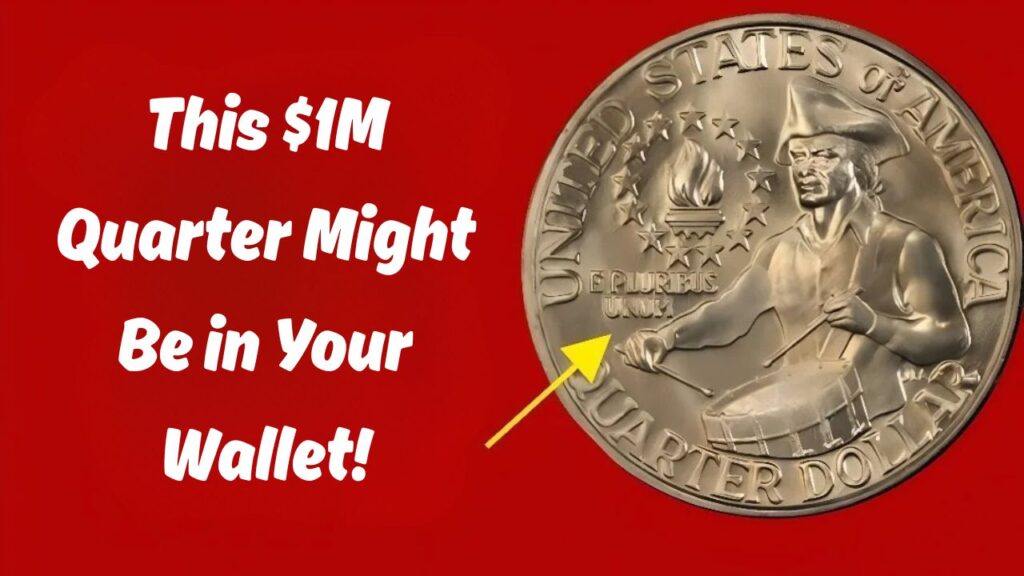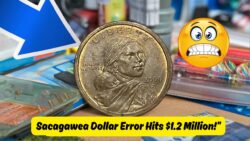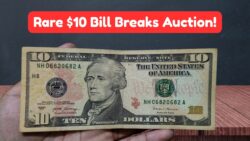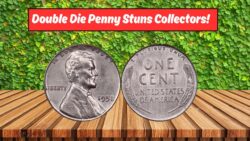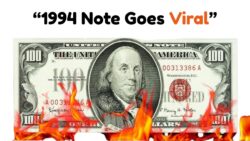Rare Bicentennial Quarter – Have you ever gone through your change jar and wondered if any of your coins are worth more than their face value? If so, you’re not alone. Coin collectors across the world are constantly on the lookout for rare and valuable pieces. And believe it or not, one such treasure could be sitting in your own home — the rare Bicentennial Quarter, a coin that has stunned collectors by reaching up to $1 million at auctions.
What Is a Bicentennial Quarter?
The Bicentennial Quarter was released in 1976 to celebrate the 200th anniversary of American independence. Instead of the standard reverse (tails) side design, these special quarters featured a unique image: a Colonial drummer boy and a victory torch surrounded by 13 stars.
Unlike regular quarters, Bicentennial Quarters were minted with the date range “1776–1976”, making them stand out immediately to anyone who glances at their pocket change.
Key Design Features:
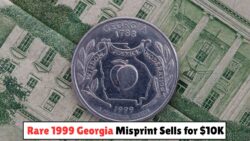 This 1999 Georgia Quarter With Misprint Just Hit $10,000 at Auction – Still in Circulation!
This 1999 Georgia Quarter With Misprint Just Hit $10,000 at Auction – Still in Circulation!
- Obverse (Front): George Washington’s profile, just like any other quarter.
- Reverse (Back): Drummer boy holding a drum, with a torch of victory.
- Mint Year: “1776–1976”
- No 1975 quarters exist – all 1975 quarter production was shifted to Bicentennial design.
Why Is One Bicentennial Quarter Worth $1 Million?
While most Bicentennial quarters are only worth 25 cents, there’s one incredibly rare prototype version that has captured the attention of collectors. This rare coin is believed to be a mint error or a pattern coin, possibly struck on a 90% silver planchet or using special dies before mass production.
What Makes It So Valuable?
- Rare Composition: Most quarters are made from copper-nickel. This rare one is believed to be struck in pure silver or experimental metal.
- Proof Quality Strike: Exceptionally sharp details and polished surfaces.
- Historical Value: One of the earliest strikes in the series.
- Auction Provenance: It fetched nearly $1 million at a private auction due to its pristine condition and unique features.
How to Identify a Valuable Bicentennial Quarter
Think you might have a winner in your change jar? Here’s what to look for:
1. Check the Date
- All genuine Bicentennial Quarters should be marked with “1776–1976”.
2. Look for an “S” Mint Mark
- Coins minted in San Francisco may have higher value, especially if they are proof coins.
- Found near the bottom right on the obverse side.
3. Check for Silver Content
- Some Bicentennial quarters were made from 40% silver, mainly included in mint sets, not general circulation.
- Silver coins sound different when dropped – they have a distinct “ring.”
- Edge should be pure silver color (no copper lines).
4. Unusual Details
- If the coin has:
- Double strikes
- Misaligned dies
- No mint mark when it should have one
- Struck on the wrong metal
These errors can increase the coin’s value dramatically.
Common vs Rare: Value Table of Bicentennial Quarters
Here’s a comparison of typical Bicentennial quarters and the rare, million-dollar version:
| Type | Mint Mark | Metal | Estimated Value |
|---|---|---|---|
| Regular Circulated | D or P | Copper-Nickel | $0.25 – $1 |
| Uncirculated | D or P | Copper-Nickel | $2 – $5 |
| Proof (from Mint Set) | S | Copper-Nickel | $3 – $7 |
| Silver Proof | S | 40% Silver | $8 – $20 |
| Rare Prototype / Error Quarter | Unknown | Silver/Other | Up to $1 million |
Where to Get Your Coin Appraised
If you think you’ve stumbled upon something special, don’t guess its value — get it appraised.
Trusted Places to Try:
- PCGS (Professional Coin Grading Service)
- NGC (Numismatic Guaranty Corporation)
- Local coin dealers or numismatic clubs
- Auction houses such as Heritage Auctions
They can grade, certify, and help you understand if your coin is truly rare — and potentially help you sell it for the right price.
In early 2024, a rare Bicentennial quarter was sold for just under $1 million at a private auction. It was an experimental piece believed to have been struck before official production began. The coin was in pristine condition, had a mirror-like finish, and lacked a mint mark — features that made it priceless to serious collectors.
Tips to Keep Your Coins Safe
If you collect coins or want to preserve your finds:
- Store them in air-tight holders
- Avoid cleaning them (this can reduce value)
- Use soft gloves when handling
- Keep them in a cool, dry place
Before you toss those old coins back into the change machine or give them to the cashier, take a closer look. That worn-looking quarter with a drummer boy on it might just be a hidden fortune waiting to be discovered. With rare prototypes of the 1976 Bicentennial Quarter going for nearly a million dollars, it’s a reminder that sometimes the greatest treasures are hidden in the most ordinary places.
Start digging through your piggy bank — your jackpot could be hiding in plain sight!
FAQs
Q1. Are all Bicentennial Quarters valuable?
No, most are worth only face value unless they are silver, proof, or error coins.
Q2. How can I tell if my Bicentennial Quarter is silver?
Check for an “S” mint mark and the coin’s edge — silver ones lack the copper stripe.
Q3. Is it okay to clean the coin before selling it?
No, cleaning can damage the coin and drastically reduce its value.
Q4. Where can I sell a valuable Bicentennial Quarter?
You can sell through certified auction houses, coin dealers, or eBay (if certified).
Q5. What if my quarter has no mint mark?
It could be a Philadelphia mint or an error — get it checked by a professional.

